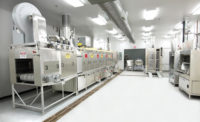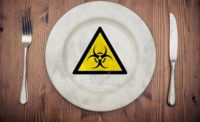As 2017 is underway and Food Safety Modernization Act (FSMA) implementation is in progress, food manufacturing facilities have an opportunity to review and revise their good manufacturing process (GMP) programs. FSMA has raised the bar for what is expected, and snack producers and bakeries should keep an eye on these 10 opportunities to check and bolster GMPs.
1. Raw materials receiving. Always evaluate certificates of analysis against specifications to assure the supplier has not shipped a product that is not compliant with the facility’s needs. As part of this initial review, also inspect trailers and materials to be sure no contaminated materials are received. The Sanitary Food Transportation Act provides additional guidance.
2. Raw material storage. Insect-susceptible raw materials (wheat, flour, spices, etc.) should be inspected every four weeks. Flour beetles, cigarette beetles, Indian meal moths and other insects are prone to harboring and infesting undisturbed materials. These insects typically have a 30-day life cycle. Also use a good stock rotation program, such as “first in, first out” (FIFO).
3. Employee hygiene. Poor employee hygiene is a leading cause of food contamination. There are various reasons for this, including cultural differences, lack of training and lack of motivation. Some plants institute rewards systems when employees are observed properly washing their hands. Other plants include hand-washing practices in their self-inspections program. The hygiene program should also include non-production areas like locker rooms.
4. Post-maintenance cleaning.The written Preventive Maintenance Program should have some function that assures cleaning activities occur after maintenance is performed on food production equipment. This step should be coupled with a formal pass-off to production or sanitation. Make sure metal shavings, parts, rags and other items are all cleared.
5. Production zone sanitation. All equipment and/or facilities must adhere to a set sanitation schedule. Also, a detailed, written SOP should clearly explain how to properly clean the equipment. Finally, employees need to be adequately trained. The absence of any one of these three factors could result in a recall related to inadequate sanitation. SOPs should specifically address niche environments, sites within the manufacturing environment that can harbor bacteria and cause post-processing contamination.
6. Non-product zone sanitation. Cleaning requirements for non-product zones are very similar to those for product zones. One key difference is the frequency at which these areas are cleaned. Motor control centers (MCCs), maintenance shops, equipment storage rooms, etc. are all prone to developing sanitation issues. Many sites place these areas on monthly or quarterly cleaning schedules.
7. Overhead design standards. Facilities have often failed GMP inspections due to overhead materials falling into the product zone. Overhead pipes that are not stainless steel may develop rust and deteriorate over time. This is particularly prevalent when moisture and/or corrosive cleaning chemicals are present.
8. Floors. Deteriorated floors can easily go undetected, particularly if they are under heavy pieces of equipment. Floors can develop large cracks, or the coating can start to peel away from the underlying base. In instances such as these, moisture and product residue can accumulate. If not cleaned, food and moisture will provide a perfect environment for microbial proliferation.
9. Pest control. It is well known that pests such as mice and flies carry pathogens. Unfortunately, these pests are also attracted to human food. A facility’s pest-management needs depend on several factors: the type of food made, the geographic location, climate, the surrounding environment and more. Someone at the site should be responsible for researching which type of pests are prone to causing problems with the site’s product. An annual assessment of the site’s needs should be conducted to assure the pest-management program remains effective.
10. Visitor and contractor training. All visitors should be made aware of the site’s GMP polices. After finding evidence of food consumption during an inspection, many auditors are told “that must have been the contractors.” Not being an internal employee is not an excuse for a GMP deviation. Many facilities assign site employees to escort and supervise contractors as they perform their work. Some sites require a rigorous training program before contract employees are allowed on the production floor.
These are just a few of the issues commonly seen during GMP inspections and facility self-inspections. Continued diligence is required to ensure food safety is a top priority.









